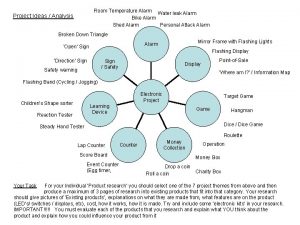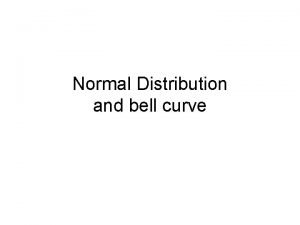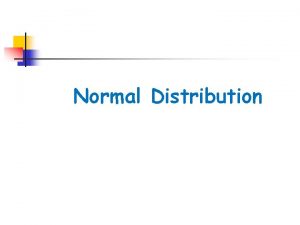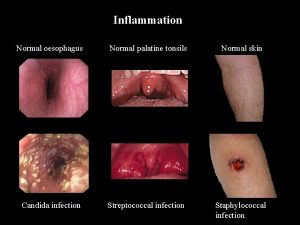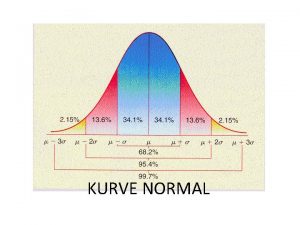Alarm Types and Testing Alarm Types Normal A












- Slides: 12

Alarm Types and Testing

Alarm Types Normal A ● B ● C ● D ● High Low ● ● Other Pause OEM / Fleet option Type As required • Fixed Outputs:

SPLs • Fixed Outputs Tonal: Type Normal High Low S = As Standard 68 – 78 85 -95 50 – 58 + [5] d. BA � +[10] d. BA B + X d. BA C S A B C

SPLs • Outputs Types Tonal: Type Normal High Low Per Standard 68 – 78 85 -95 50 – 58 Manual Switched by time or driver or …. Self-Adjusting Stepped Self-Adjusting Continuous

Self-Adjusting • Speaker acting as mic registering overall d. BA • Mic able to filter ambient by: • Frequency range • Impact sounds less than [300] m/s ignored • ? ?

120 Alarm Types 100 Need to define where alarm steps. Graph shows steps at lower and upper limits currently in draft. 80 Difference compared to self-adjusting: Lower step = 10 d. BA Higher step = 8 d. BA 60 40 Ambient Self Adjust Stepped Min Stepped Max 20

Testing • Laboratory / Component Supplier: Type Per Standard Manual Normal High Low 73 +/- 5 d. BA or 72 to 74 +/- 4 d. BA or 71 to 75 +/- 3 d. BA or 70 to 76 +/- 2 d. BA 90 +/- 5 d. BA ditto 54 +/- 4 d. BA Ditto 73 +/- 5 d. BA 90 +/- 5 d. BA 54 +/- 4 d. BA Self-Adjusting Stepped As above [+ 5 d. B(A) ± 4] in addition to the ambient sound in the range of [63 to 100] d. B(A) Self-Adjusting Continuous As above [+ 5 d. B(A) ± 4] in addition to the ambient sound in the range of [63 to 100] d. B(A) Current SAE J 994 allows max of +/- 4 d. BA variation from alarm rated value

Where is ambient measured? Assumed at alarm: 1. Alarm installed at the rear most point of vehicle • Measuring ambient at rear 2. Alarm installed within the vehicle: • Ambient could be quieter; external sounds masked • Ambient could be louder: • from resonance by truck/vehicle body or • other sounds from vehicle

Audibility – ISO 7731 Where is most frequency content in ambient sound? An alarm can often have a lower overall d. BA value than ambient and easily be detectable

OEM / Distributor / Fleet On Vehicle Testing • Fixed Outputs Tonal: Alarm selected based on installation position to ensure sufficient sound is projected to the area of risk. Type Normal High Low S = As Standard 68 – 78 85 -95 50 – 58 + 5 d. BA � +10 d. BA B + X d. BA C Illustrative examples / values S A B C

Tonal v Broadband Sound Fields

Loudness v Audibility Alarm A at 1. 5 k. Hz will seem twice as loud at Alarm C!
 Positive negative testing
Positive negative testing Static testing and dynamic testing
Static testing and dynamic testing Domain testing in software testing methodologies
Domain testing in software testing methodologies Motivational overview of logic based testing
Motivational overview of logic based testing Data flow testing strategies in software testing
Data flow testing strategies in software testing Globalization testing example
Globalization testing example Neighborhood integration testing
Neighborhood integration testing Decision table testing in software testing
Decision table testing in software testing Control structure testing in software engineering
Control structure testing in software engineering Decision table testing in software testing
Decision table testing in software testing Decision table testing examples
Decision table testing examples Jelaskan pengertian pengujian black box
Jelaskan pengertian pengujian black box Behavioral testing adalah
Behavioral testing adalah













